|
Builder: Casavant Freres Opus 3762 (1998) Manuals: 3 Ranks: 57 Stops: 47 Action: Mechanical --Information from the "Pipedreams" website. Richard Rasch, photographer. Additional photos from Jonathan Orwig. Last update 5/2013 |
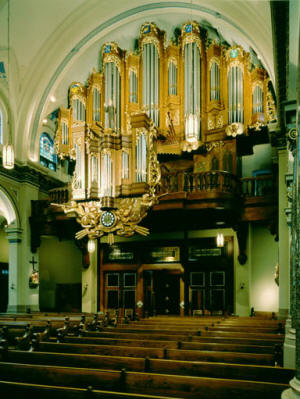 |
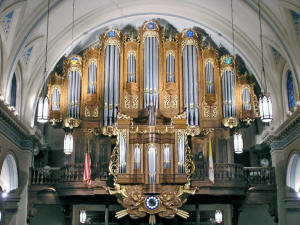 |
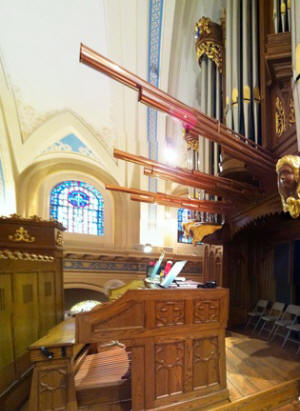 |
|
GRANDE ORGUE 16 Montre 16 Bourdon 8 Montre 8 Flûte à cheminée 8 Flûte harmonique 4 Prestant 4 Flute 2 Doublette 2-2/3 Cornet III 1-1/3 Fourniture IV 8 Trompette 16 Bombarde St-Michel 8 Trompette St-Michel |
|
|
RECIT 8 Principal 8 Viole de gambe 8 Voix céleste 8 Cor de nuit 4 Octave 2 Octavin 2 Plein jeu III-IV 16 Basson 8 Trompette 4 Clairon Cloches Rossignol |
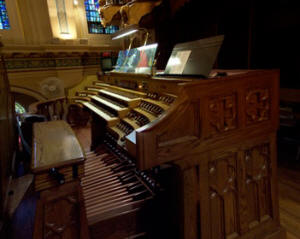 |
|
POSITIF DE DOS 8 Bourdon 4 Montre 4 Flûte a fuseau 2-2/3 Nazard 2 Quarte de Nazard 1-3/5 Tierce 1-1/3 Larigot 1 Cymbale III 8 Cromorne 16 Bombarde St-Michel (GO) Trompette St-Michel (GO) |
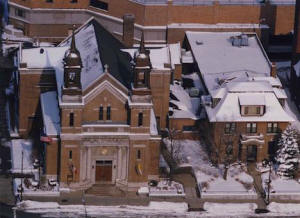 |
|
CHOEUR 8 Bourdon 8 Salicional 8 Unda Maris 8 Flute douce 8 Flute celeste 4 Fugara 4 Flûte a cheminee 2 Cor de chamois 1-1/3 Quintelette 8 Hautbois 8 Clarinette 8 Voix Humaine Cloches (R) |
PEDALE 32 Contrebasse (digital) 32 Soubasse (digital) 16 Montre (GO) 16 Soubasse 16 Bourdon (GO) 8 Octavebasse 8 Flûte bouchée 4 Octave 32 Contre-Bombarde (digital) 16 Bombarde 16 Basson (R) 8 Trompette 8 Trompette St-Michel (GO) 4 Clairon |
|
A SHORT HISTORY OF SAINT LOUIS CHURCH French and French-Canadian settlers in the St. Paul area established the parish of Saint Louis, King of France in 1868. When they decided to build a new building in 1909, the parish commissioned Emmanuel-Louis Masqueray, one of the leading French architects of the time, to create a truly special building. Although this parish church was considerably smaller than some of his other commissions, including the St. Paul Cathedral and the Basilica of St. Mary in Minneapolis, Masqueray considered this building to be of special significance, referring to it as his "little gem." The commission of this instrument represented a rare opportunity for a contemporary organ builder to design and build an organ for today in an historic style case typical of organs hundreds of years old. The elaborately hand-carved oak case contains symbols expressing important aspects of Christian faith as well as the history of this particular parish. The carvings are decorated with an application of gold leaf to highlight the details. Classical principles of design have influenced the specification with many reed and flue colors included in the four manual divisions. In this parish the accompaniment of the liturgy and choral ensembles is particularly important and is enhanced by a twelve stop expressive Choeur located directly behind the choristers. The detached low-profile drawknob console, located just behind the Positif de dos, has Cavaillé-Coll style terraced stop jambs. Further details may be found in the reprint of the February 1999 cover feature article of The American Organist magazine in the Published Articles section of the website. |
|